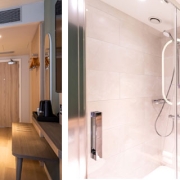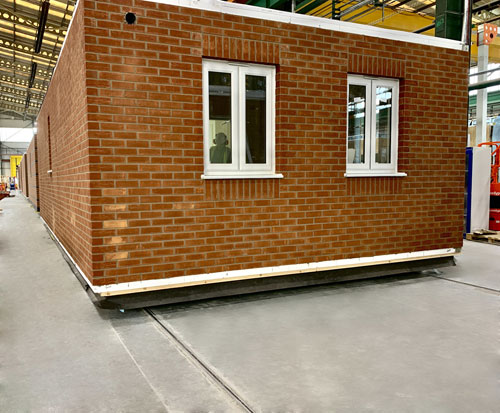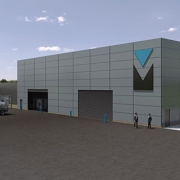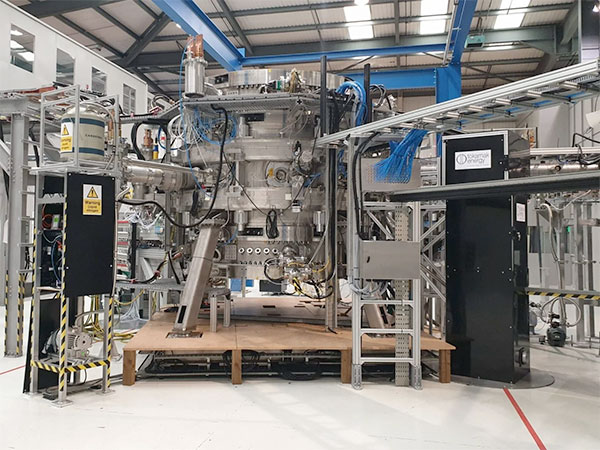- The relaunched PAS 2080 specification provides guidelines for cutting carbon emissions down the construction value chain.
- It recognizes the importance of climate resilience alongside emissions reductions.
- Digital twins are a valuable tool for collecting essential data for decarbonizing construction.
Infrastructure is essential: We cannot live without it. But we must decarbonize it. According to the UN Environment Programme, our buildings, energy systems, water, waste and communications systems are responsible for 79% of emissions. We need to deliver systemic transformation or we will not meet the 1.5-2°C global warming target set by the Paris Agreement.
How to achieve this is set out in PAS 2080, the world’s first international specification for cutting carbon emissions arising from the construction, operation and use of the built environment.
PAS 2080 was launched in 2016. Its focus then was infrastructure. But over the course of 2022, its scope has been radically expanded. It will be relaunched in March 2023, covering buildings as well as infrastructure. It will show the whole value chain – asset owners, designers, constructors and product/materials suppliers – how to work together to systemically drive carbon emissions towards zero.
The update recognizes that deep and ultimately absolute carbon reduction requires:
- Strong leadership with a clear vision for decarbonization supported by values and policy.
- A systems approach that removes blockers, unlocks enablers and realizes synergies between organizations and sectors.
- Collaboration across the value chain and between organizations, with risk and reward fairly shared.
- A whole-life view of built environment assets, networks and systems that accounts for interventions to maintain, repair, repurpose, adapt, upgrade, expand and ultimately repurpose and/or remove them.
PAS 2080 recognizes the need for climate resilience alongside carbon reduction: Infrastructure and buildings required to achieve carbon reductions must be resilient to the physical impacts of climate change; and adaptive or defensive measures to provide resilience must take account of carbon emissions.
It addresses natural capital: Nature-based solutions can be used instead of or alongside traditional solutions in some instances, avoiding capital and operational emissions and providing many other co-benefits. And however close organizations and nations get to net-zero emissions, there will always be residual greenhouse gas emissions that must be offset. Natural capital including wetlands, peatlands, grasslands and forest are essential for sequestering carbon from the atmosphere, alongside engineered sequestration solutions.
Fast track to decarbonization
High Speed Two Ltd, the organization behind the UK’s £70 billion HS2 railway and one of our clients, was one of the world’s first to become PAS 2080-accredited. The goal is to achieve a 50% carbon saving against the reference design and to make the project carbon net zero by 2035. To achieve this, HS2 Ltd has driven collaboration across its supply chain and with the many owners and operators whose infrastructure the project interfaces with.
It has set clear targets and driven continuous improvement, inspiring low carbon best practice from all of its designers, contractors and suppliers. Carbon savings come from diesel-free construction sites, designing earthwork and tunnels to reduce volumes excavated and transported, using modern methods of construction, sharing materials with adjacent projects, and use of regenerative design to go beyond compensation for land taken for construction and achieve a net gain in biodiversity.
In its Net Zero 2030 Routemap, another of our clients, Water UK, which represents water and sewerage companies in the UK, identified the potential for supplying renewable methane from wastewater treatment to the gas grid, supporting decarbonization of the energy system. The plan also highlights the importance of collaboration between water companies: Their capacity to produce biogas, generate renewable electricity, incorporate nature-based solutions or offset carbon is varied, and none can become net-zero alone. Tackling decarbonization collectively removes blockers and enables a more strategic engagement with regulators, government and the supply chain.
Seeing how with digital twins
Discovering opportunities is only possible if organizations collaborate and share data. Digitalization is an essential partner to systems thinking as it provides the data and transparency that is needed for understanding the interdependencies of today and tomorrow.
All over the world organizations are revolutionizing their infrastructure by creating digital versions of their operational assets. Fed with real-time information, they can show live as well as historic performance and enable predictive management, using artificial intelligence.
Carbon emissions data could become part of these digital twins, allowing embodied and operational emissions to be better managed, and for systemic impacts between networks to be understood, providing insights into the challenges and opportunities for decarbonization.
Systems thinking and digitalization empower the revolution that we need to turn the built environment from a climate change problem into part of the solution. PAS 2080 shows the way.
Source: World Economic Forum







 Councillor David Gibson, who co-chairs the housing committee, said: “We’re proud to have one of the most ambitious programmes of building new council homes in the country, and we are making the most of council-owned sites around the city to provide extra housing.
Councillor David Gibson, who co-chairs the housing committee, said: “We’re proud to have one of the most ambitious programmes of building new council homes in the country, and we are making the most of council-owned sites around the city to provide extra housing.






